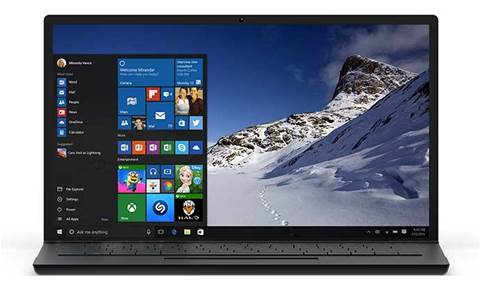Windows 10 will be available on 29 July as a free upgrade for Windows 7 and 8.1 users in 190 markets around the world, including Australia.
Users get one year after the 29 July launch to secure their free upgrade. Once upgraded, Microsoft will keep the operating system up to date at no cost for the life of the device. The initial launch is only for PCs and tablets, with other devices, such as phones and Xbox, to follow "later this year".
Gartner has predicted that Windows 10 uptake will be stronger than Windows 7, with 50 percent of PCs in enterprises to be running Win10 by the end of 2018, 25 percent higher than the percentage of PCs that were running Windows 7 in the same timeframe after the launch.
The new operating system will bring a bevy of new features, including the return of the Start menu and the arrival of the Edge browser, which replaces Internet Explorer and has Microsoft's Cortana personal assistant baked in.
In addition to the operating system launch, Microsoft will also bring new Office 2016 applications, with Word, Excel and PowerPoint "designed from the ground up to run on Windows 10", sold separately. OneNote and Outlook are included free with Windows 10.
After the dismal reception to the touch-skewed interface of Windows 8, Microsoft is banking on its Continuum feature to help bridge multiple form factors. Continuum "enables today’s best laptops and 2-in-1 devices to elegantly transform from one form factor to the other, enabling smooth transitions of your tablet into a PC, and back."
With Continuum, users can connect their Windows phones to a monitor, mouse and physical keyboard to make the device operate like a PC.
Last month, Microsoft revealed which users would qualify for which version of the new OS. Windows 7 Home Basic and Home Premium licence holders, as well as Windows 8 and 8.1 users, will all be upgraded to Windows 10 Home – Microsoft's basic Windows 10 package. Those using Windows 7 Professional and Ultimate, and those using Windows 8 and 8.1 Pro, will be upgraded to Windows 10 Pro.
Terry Myerson, executive vice president, Microsoft, said: "Windows 10 is a new generation of Windows designed to empower you to do great things.
"Windows 10 starts to deliver on our vision of more personal computing, defined by trust in how we protect and respect your personal information, mobility of the experience across your devices, and natural interactions with your Windows devices, including speech, touch, ink and holograms."
Resellers will be hoping Windows 10 drives increased business around PC refreshes, but IDC cautions not to get your hopes up. Speaking to CRN in March, Bryan Ma, the analyst firm's Singapore-based vice president of client devices research, said that despite a little bump in PC around the launch as the Microsoft marketing engine kicks in, IDC isn’t forecasting a huge sales spike.
“Windows 10 is definitely where Microsoft should have been with Windows 8, but even then, we aren’t necessarily expecting it to translate into huge PC upgrades right away.
“Consumers will get free in-place upgrades using existing hardware, while businesses are likely to cling to Windows 7 for as long as they can, rather than making any massive shifts to Windows 10. In that sense, upgrade cycles should generally just proceed as usual,” said Ma.




.png&h=142&w=230&c=1&s=1)

_(21).jpg&h=142&w=230&c=1&s=1)

.jpg&h=142&w=230&c=1&s=1)




.jpg&w=100&c=1&s=0)







.jpg&q=95&h=298&w=480&c=1&s=1)



